#fossil from Dorset
Explore tagged Tumblr posts
Photo

RARE Spiroceras bifurcati Fossil Heteromorph Ammonite Jurassic Coast Dorset UK COA
This listing features a VERY RARE fossil specimen of the heteromorph ammonite Spiroceras bifurcati, discovered by our expert field team, Alister and Alison, on 30 April 2025 at Burton Bradstock, along the internationally recognised Jurassic Coast, Dorset, UK.
The fossil originates from the Inferior Oolite Formation, part of the Bajocian Stage of the Middle Jurassic (~170 million years ago). Spiroceras is a highly unusual ammonite genus due to its heteromorph coiling pattern—the shell does not coil in a regular spiral but instead shows a partially uncoiled, irregular or spiral form. This unique morphology makes it an exceptional and highly sought-after specimen.
Scientific and geological context:
Order: Ammonitida
Superfamily: Stephanoceratoidea
Family: Possibly Tulitidae (classification debated)
Genus & Species: Spiroceras bifurcati
Morphology Features: Bifurcating ribbing, heteromorphic shell with open, loosely coiled whorls
Geological Stage: Bajocian
Depositional Environment: Shallow marine shelf with oolitic sedimentation typical of the Inferior Oolite
The fossil has been professionally cleaned, prepped, and treated by Alison, preserving its rare and delicate form. The photo provided is of the actual specimen you will receive, and includes a 1cm scale cube for accurate sizing—please refer to the photo for full measurements.
All of our fossils are 100% genuine specimens and come with a Certificate of Authenticity (COA), confirming provenance and scientific identity.
This is a highly collectable and visually striking piece, ideal for fossil enthusiasts, advanced collectors, museums, or educational institutions looking to showcase rare Jurassic marine life.
Origin: Burton Bradstock, Dorset, United Kingdom
Formation: Inferior Oolite
Age: Bajocian Stage, Middle Jurassic (~170 Ma)
Species: Spiroceras bifurcati
Discovered by: Alister and Alison (30 April 2025)
Prepared by: Alison
Authenticity: 100% Genuine Fossil with COA
#Spiroceras bifurcati#heteromorph ammonite#rare ammonite fossil#Jurassic ammonite#fossil from Dorset#Inferior Oolite ammonite#Jurassic Coast fossil#Burton Bradstock fossil#ammonite with COA#ammonite UK#fossil ammonite#Middle Jurassic ammonite#authentic fossil specimen#Spiroceras ammonite
0 notes
Text


Below the cut is a template email to send to Edinburgh Pride regarding sponsorship from Aegon, who have investments linked to the genocide in Palestine. Please feel free to use this text or edit it and make it your own and send it to [email protected]
Dear Edinburgh Pride,
As a queer person living in Edinburgh, I was deeply saddened to learn that the march partner for Edinburgh Pride 2024 is Aegon.
In December 2023 the ‘Don’t Buy Into Occupation Coalition’ published a report that showed Aegon have US$564million invested via shares and bonds in companies operating in illegal settlements in Occupied Palestinian Territories. Source: https://dontbuyintooccupation.org/wp-content/uploads/2023/12/2023_DBIO-III-Report_11-December-2023.pdf
We are watching a live-streamed genocide every day - over 36,000 people in Palestine have been murdered by Israeli forces, including at least 15,000 children. The brutality of these atrocities are unthinkable, with evidence of torture and targeting of hospitals, ambulances and refugee camps.
We all have a responsibility to do what we can to end this genocide. As queer people, we are part of a rich history of resisting oppression and dehumanisation - of both ourselves and those we stand in solidarity with. Pride started as a protest against homophobia, transphobia and police violence. It is an important moment to come together as a community to celebrate queer joy and resilience.
But how can we celebrate using profits stained with the blood of our siblings in Palestine?
Aegon has $564million invested in companies that have been listed by the UN as “raising human rights concerns” for their operations in illegal settlements in Occupied Palestinian Territories, In 1948, 750,000 Palestinian people were displaced from their homes and lands and since then, Israeli settlements have been used to spread this process of colonisation.
In addition to this figure, Aegon also has major investments in Eaton Corp Plc., who supply parts for helicopters and fighter jets to the Israeli military and have recently been the target of major protests at their factory in Dorset. They also invest in Amazon, who support the Israeli military with surveillance technology used against Palestians.
Israel has long used ‘pinkwashing’ as a tactic to justify the brutal repression of Palestinians, using queer people to legitimise this horrific violence. We refuse to allow this to be done in our name.
The tide is turning on companies like Aegon that profit from investments in the companies complicit in genocide. Recently, both Hay and Edinburgh Book Festival have dropped Baillie Gifford as a sponsor after over 800 authors called on them to divest from companies involved in Israel and the fossil fuel industry.
I ask that Edinburgh Pride:
Calls on Aegon to commit to divest from companies involved in supplying technology to Israel and operating in illegal settlements.
Drop Aegon as a sponsor until they are able to show evidence of divestment.
Publicly call for a ceasefire and a free Palestine.
There is no pride in genocide.
I look forward to hearing your response.
XX
Sources:
Investments in companies operating in illegal settlements https://dontbuyintooccupation.org/wp-content/uploads/2023/12/2023_DBIO-III-Report_11-December-2023.pdf
Investments in Eaton https://extranet.secure.aegon.co.uk/static/sxhub/pdf/client-pen-distribution.pdf
Investments in Amazon https://www.aegon.co.uk/content/dam/auk/assets/publication/fund-factsheet/standard_bkj9zs0.pdf
Israel’s pinkwashing: https://bdsmovement.net/pinkwashing
War on Gaza statistics: https://www.aljazeera.com/news/longform/2023/10/9/israel-hamas-war-in-maps-and-charts-live-tracker
Edinburgh book festival ends Baillie Gifford sponsorship: https://www.bbc.co.uk/news/articles/cm553zrr3e4o
6K notes
·
View notes
Text

Rare beautiful golden pyrite ammonite fossils from the world famous Jurassic Coast beach of Charmouth, Dorset UK.
Photo : 📷 Fms.fossils.
Dr Fiann Smithwick
613 notes
·
View notes
Text
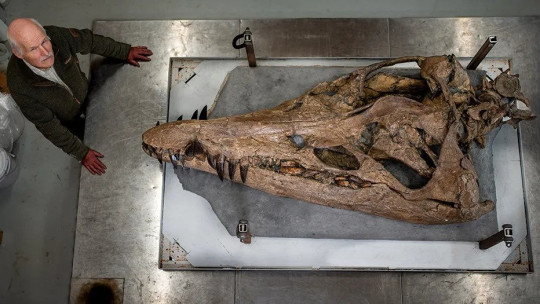
Gigantic Skull of Prehistoric Sea Monster Found on England’s ‘Jurassic Coast’
The remarkably well-preserved skull of a gigantic pliosaur, a prehistoric sea monster, has been discovered on a beach in the county of Dorset in southern England, and it could reveal secrets about these awe-inspiring creatures.
Pliosaurs dominated the oceans at a time when dinosaurs roamed the land. The unearthed fossil is about 150 million years old, almost 3 million years younger than any other pliosaur find. Researchers are analyzing the specimen to determine whether it could even be a species new to science.
Originally spotted in spring 2022, the fossil, along with its complicated excavation and ongoing scientific investigation, are now detailed in the upcoming BBC documentary “Attenborough and the Jurassic Sea Monster,” presented by legendary naturalist Sir David Attenborough, that will air February 14 on PBS.

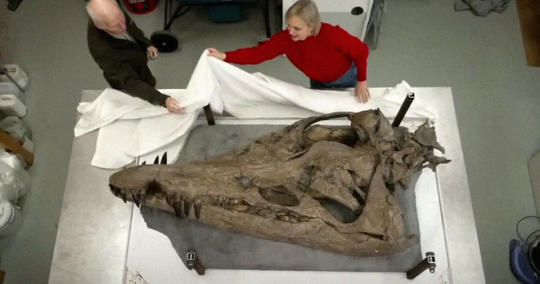
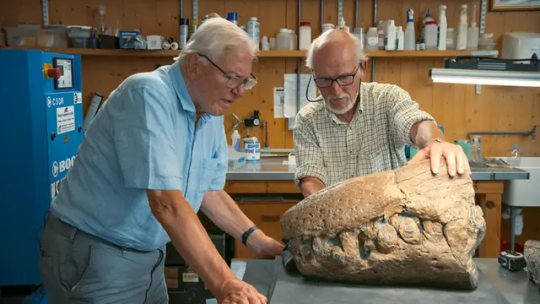
Such was the enormous size of the carnivorous marine reptile that the skull, excavated from a cliff along Dorset’s “Jurassic Coast,” is almost 2 meters (6.6 feet) long. In its fossilized form, the specimen weighs over half a metric ton. Pliosaurs species could grow to 15 meters (50 feet) in length, according to Encyclopaedia Britannica.
The fossil was buried deep in the cliff, about 11 meters (36 feet) above the ground and 15 meters (49 feet) down the cliff, local paleontologist Steve Etches, who helped uncover it, said in a video call.
Extracting it proved a perilous task, one fraught with danger as a crew raced against the clock during a window of good weather before summer storms closed in and the cliff eroded, possibly taking the rare and significant fossil with it.
Etches first learned of the fossil’s existence when his friend Philip Jacobs called him after coming across the pliosaur’s snout on the beach. Right from the start, they were “quite excited, because its jaws closed together which indicates (the fossil) is complete,” Etches said.
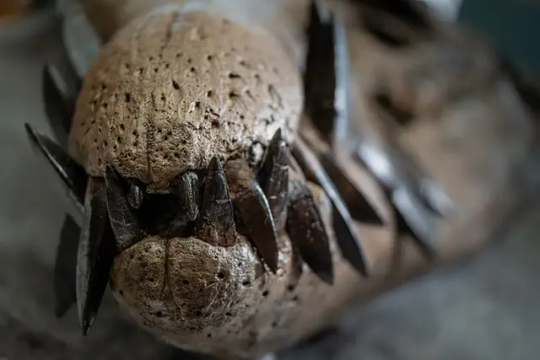
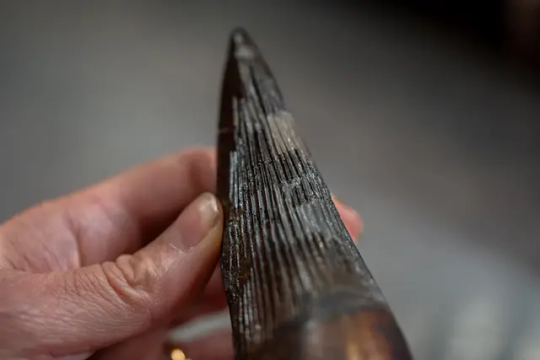
After using drones to map the cliff and identify the rest of the pliosaur’s precise position, Etches and his team embarked on a three-week operation, chiseling into the cliff while suspended in midair.
“It’s a miracle we got it out,” he said, “because we had one last day to get this thing out, which we did at 9:30 p.m.”
Etches took on the task of painstakingly restoring the skull. There was a time he found “very disillusioning” as the mud, and bone, had cracked, but “over the following days and weeks, it was a case of …, like a jigsaw, putting it all back. It took a long time but every bit of bone we got back in.”
It’s a “freak of nature” that this fossil remains in such good condition, Etches added. “It died in the right environment, there was a lot of sedimentation … so when it died and went down to the seafloor, it got buried quite quickly.”
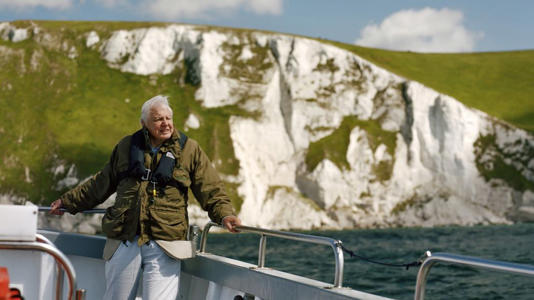
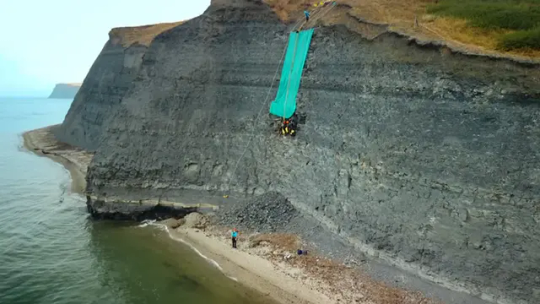
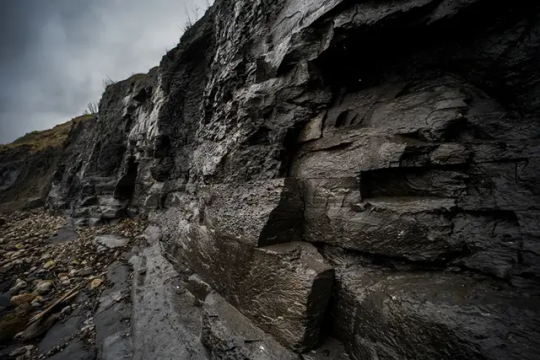
Fearsome top predator of the seas
The nearly intact fossil illuminates the characteristics that made the pliosaur a truly fearsome predator, hunting prey such as the dolphinlike ichthyosaur. The apex predator with huge razor-sharp teeth used a variety of senses, including sensory pits still visible on its skull that may have allowed it to detect changes in water pressure, according to the documentary.
The pliosaur had a bite twice as powerful as a saltwater crocodile, which has the world’s most powerful jaws today, according to Emily Rayfield, a professor of paleobiology at the University of Bristol in the United Kingdom who appeared in the documentary. The prehistoric marine predator would have been able to cut into a car, she said.
Andre Rowe, a postdoctoral research associate of paleobiology at the University of Bristol, added that “the animal would have been so massive that I think it would have been able to prey effectively on anything that was unfortunate enough to be in its space.”
By Issy Ronald.
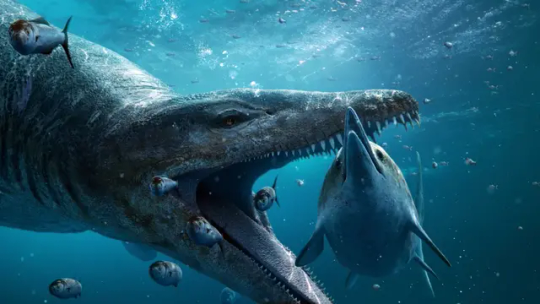
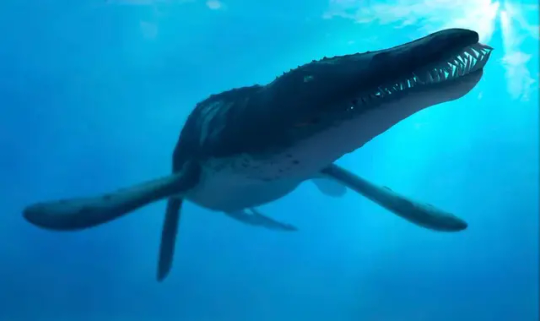
#Gigantic Skull of Prehistoric Sea Monster Found on England’s ‘Jurassic Coast’#Dorset England#pliosaur#jurassic#fossil#prehistoric#dinosaur#paleobiology#palaeontologists#archaeology#archeolgst#history#history news#ancient history#Sir David Attenborough#nature#naturalist
2K notes
·
View notes
Text

Fossilized fish bones of a Chondrosteus acipenseroides from the Charmouth Mudstone Formation in Church Cliff Bay, Lyme Regis, Dorset, England. This Lower Jurassic aged acipenseriform is a distant relative of today's sturgeon and paddlefish and one of the earliest known taxa of this clade. This specimen was acid prepped out a beach nodule.
#fish#fossils#paleontology#palaeontology#paleo#palaeo#chondrosteus#acipenseriformes#chondrosteidae#sturgeon#paddlefish#jurassic#mesozoic#prehistoric#science#paleoblr#コンドロステウス#コンドロステウス科#チョウザメ目#化石#古生物学
94 notes
·
View notes
Text
Dornraptor normani Baron, 2024 (new genus and species)

(Hindlimb bones of Dornraptor normani, from Baron, 2024)
Meaning of name: Dornraptor = Dornwaraceaster [Anglo-Saxon name for the region roughly corresponding to what is now Dorset] thief [in Latin]; normani = for David B. Norman [British paleontologist]
Age: Early Jurassic (Hettangian–Sinemurian)
Where found: Blue Lias Formation, Dorset, UK
How much is known: A partial hindlimb and a partial femur (thigh bone).
Notes: Fossils of Dornraptor were originally identified in 1859 as specimens of the armored plant-eating dinosaur Scelidosaurus. Later authors thought that they more likely belonged to theropods, but left them unnamed. A new study of these specimens considers them distinct enough to be given a new genus and species. Based on phylogenetic analyses, Dornraptor was probably an early member of Averostra, the group of theropods that unites ceratosaurs and the stiff-tailed tetanurans.
Reference: Baron, M.G. 2024. A new name for old bones: a reassessment of Early Jurassic theropod remains from Dorset, England. Palaeontologia Electronica 27: 25. doi: 10.26879/1346
54 notes
·
View notes
Text

A landslide on a Dorset beach has attracted dozens of fossil hunters in search of relics.
Some 200 enthusiasts combed the beach in the village of Charmouth, on the Jurassic Coast, collecting scores of ammonite fossils.
The majority are said to have picked up ammonites, extinct sea molluscs prized for their intricate spiral shells, which measure from 2cm to 2ft and were washed out of the mud and shale by the sea.
Very cool, if you like such things. I know good examples sell to collectors for a tidy price.

13 notes
·
View notes
Text

Mary Anning (21 May 1799 – 9 March 1847) was an English fossil collector, dealer, and palaeontologist. She became known internationally for her discoveries in Jurassic marine fossil beds in the cliffs along the English Channel at Lyme Regis in the county of Dorset, Southwest England. Anning's findings contributed to changes in scientific thinking about prehistoric life and the history of the Earth.
Anning searched for fossils in the area's Blue Lias and Charmouth Mudstone cliffs, particularly during the winter months when landslides exposed new fossils that had to be collected quickly before they were lost to the sea. Her discoveries included the first correctly identified ichthyosaur skeleton when she was twelve years old; the first two nearly complete plesiosaur skeletons; the first pterosaur skeleton located outside Germany; and fish fossils. Her observations played a key role in the discovery that coprolites, known as bezoar stones at the time, were fossilised faeces, and she also discovered that belemnite fossils contained fossilised ink sacs like those of modern cephalopods.
Anning struggled financially for much of her life. As a woman, she was not eligible to join the Geological Society of London, and she did not always receive full credit for her scientific contributions. However, her friend, geologist Henry De la Beche, who painted Duria Antiquior, the first widely circulated pictorial representation of a scene from prehistoric life derived from fossil reconstructions, based it largely on fossils Anning had found and sold prints of it for her benefit.
Anning became well known in geological circles in Britain, Europe, and America, and was consulted on issues of anatomy as well as fossil collecting. The only scientific writing of hers published in her lifetime appeared in the Magazine of Natural History in 1839, an extract from a letter that Anning had written to the magazine's editor questioning one of its claims. After her death in 1847, Anning's unusual life story attracted increasing interest.
9 notes
·
View notes
Text

Breaking News-Last year the 2-meter-long skull of a huge 10 or 12-meter-long pliosaur that lived about 150 million years ago (the creature hasn’t been formally described yet) and had a bite-force of approximately 33,000 newtons was painstakingly unearthed from the face of a cliff in the fossil-rich Jurassic Coast of Dorset, England, and it has now become the subject of a recent David Attenborough documentary that was released just a few days ago. But sad thing is, the original amateur discoverer of the fossil Philip Jacob has not been given credit for this single fascinating find, and now there’s a petition to name the Pliosaur after him.
Let justice be done to Philip Jacobs!
Here is what the living animal would look like when it is compared in size with a human time-traveler.
49 notes
·
View notes
Text
Etheldred Benett was born on 22 July 1775 at Pyt House, Tisbury, Wiltshire. By at least 1809, Benett had begun to acquire a significant collection of fossils. Her independent wealth (she never married) meant that she was able to collect high quality specimens from the many working quarries in the area, as well as from her holidays to the Dorset coast. Such was the importance of her collection that it became the first port of call for geologists studying the Wiltshire area. She also sent duplicate specimens to museums all over the country (including the Geological Society) and published books on her collection. [X]

3 notes
·
View notes
Photo

Oppelia subradiata Fossil Ammonite Jurassic Coast Dorset UK Inferior Oolite COA
Offered here is an elegant and scientifically notable specimen of Oppelia subradiata Fossil Ammonite, carefully discovered by our field team, Alister and Alison, on 30 April 2025 at the famous Jurassic Coast locality of Burton Bradstock, Dorset, UK.
This fossil derives from the Inferior Oolite Formation, a Middle Jurassic oolitic limestone known for yielding exceptionally preserved marine fossils. Oppelia subradiata is distinguished by its narrow, compressed shell with fine ribbing and involute coiling.
Scientific and geological details:
Order: Ammonitida
Superfamily: Haploceratoidea
Family: Oppeliidae
Zone: Garantiana Zone
Geological Stage: Bajocian (~170 million years ago)
Depositional Environment: Shallow marine shelf with oolitic sedimentation
This specimen has been expertly cleaned, prepped, and treated by Alison, preserving all natural features with care. The photo provided shows the exact specimen you will receive, with a 1cm scale cube included for full sizing reference. Please consult the image for precise dimensions.
All of our fossils are 100% genuine specimens and come with a Certificate of Authenticity (COA), assuring its authenticity and documented provenance.
An excellent acquisition for fossil enthusiasts, collectors, educators, or anyone looking to own a real piece of ancient marine history.
Origin: Burton Bradstock, Dorset, United Kingdom
Formation: Inferior Oolite
Age: Bajocian Stage, Middle Jurassic (~170 Ma)
Species: Oppelia subradiata
Zone: Garantiana Zone
Discovered by: Alister and Alison (30 April 2025)
Prepared by: Alison
Authenticity: 100% Genuine Fossil with COA
#Oppelia subradiata#fossil ammonite#Jurassic Coast fossil#Inferior Oolite ammonite#Burton Bradstock fossil#Dorset ammonite#Jurassic fossil UK#ammonite with COA#Middle Jurassic ammonite#ammonite from England#authentic fossil specimen#ammonite display fossil#Oppeliidae ammonite
0 notes
Text
I know you've all been waiting eagerly for it, and here it is: the first Wikipedia poll of the new year! Links and summaries below the cut as always.
On 29 September 1940, a mid-air collision occurred over Brocklesby, New South Wales, Australia. The accident was unusual in that the aircraft involved, two Royal Australian Air Force (RAAF) Avro Ansons of No. 2 Service Flying Training School, remained locked together after colliding, and then landed safely.
On 11 May 1812, at about 5:15 pm, Spencer Perceval, the prime minister of the United Kingdom of Great Britain and Ireland, was shot dead in the lobby of the House of Commons by John Bellingham, a Liverpool merchant with a grievance against the government. Bellingham was detained; four days after the murder, he was tried, convicted and sentenced to death.
The Dorset Ooser (/ˈoʊsər/) is a wooden head that featured in the 19th-century folk culture of Melbury Osmond, a village in the southwestern English county of Dorset. The head was hollow, thus perhaps serving as a mask, and included a humanoid face with horns, a beard, and a hinged jaw which allowed the mouth to open and close.
The Ediacaran (/ˌiːdiˈækərən/; formerly Vendian) biota is a taxonomic period classification that consists of all life forms that were present on Earth during the Ediacaran Period (c. 635–538.8 Mya). These were enigmatic tubular and frond-shaped, mostly sessile, organisms. Trace fossils of these organisms have been found worldwide, and represent the earliest known complex multicellular organisms.
John Rykener, also known as Eleanor, was a 14th-century sex worker arrested in December 1394 for performing a sex act with John Britby, a man who was a former chaplain of the St Margaret Pattens church, in London's Cheapside while wearing female attire. Although historians tentatively link Rykener, who was male, to a prisoner of the same name, the only known facts of the sex worker's life come from an interrogation made by the mayor of London.
Norwich Market (also known as Norwich Provision Market) is an outdoor market consisting of around 200 stalls in central Norwich, England. Founded in the latter part of the 11th century to supply Norman merchants and settlers moving to the area following the Norman conquest of England, it replaced an earlier market a short distance away. It has been in operation on the present site for over 900 years.
Olive Elaine Morris (26 June 1952 – 12 July 1979) was a Jamaican-born British-based community leader and activist in the feminist, black nationalist, and squatters' rights campaigns of the 1970s. At the age of 17, she claimed she was assaulted by Metropolitan Police officers following an incident involving a Nigerian diplomat in Brixton, South London. She joined the British Black Panthers, becoming a Marxist–Leninist communist and a radical feminist.
Paul Palaiologos Tagaris (Greek: Παῦλος Παλαιολόγος Τάγαρις, c. 1320/1340 – after 1394) was a Byzantine Greek monk and impostor. A scion of the Tagaris family, Paul also claimed a somewhat dubious connection with the Palaiologos dynasty that ruled the Byzantine Empire at the time. He fled his marriage as a teenager and became a monk, but soon his fraudulent practices embroiled him in scandal.
The Royal baccarat scandal, also known as the Tranby Croft affair, was a British gambling scandal of the late 19th century involving the Prince of Wales—the future King Edward VII. The scandal started during a house party in September 1890, when Sir William Gordon-Cumming, a lieutenant colonel in the Scots Guards, was accused of cheating at baccarat.
In a protracted conflict during the Spanish colonization of the Americas, Spanish colonisers gradually incorporated the territory that became the modern country of Guatemala into the colonial Viceroyalty of New Spain. Before the conquest, this territory contained a number of competing Mesoamerican kingdoms, the majority of which were Maya.
32 notes
·
View notes
Text

Mary Anning by Allison Adams
Mary Anning (1799 – 1847) was a fossil collector and paleontologist from Lyme Regis, Dorset in Southwest England, who became known around the world for important finds she made in marine fossil beds in the cliffs along the Jurassic Coastline. While searching for the plentiful ammonite fossils which she sold as novelty items to tourists, she began to discover larger prehistoric fossils, excavating the first Ichthyosaurus skeleton and discovering the first intact Plesiosaurus skeleton. Her findings contributed to important changes in scientific thinking about prehistoric life and the history of the Earth. She was also the true-life figure behind the nursery rhyme.
#Allison adams#Mary anning#paleontology#palaeontologist#art#artwork#herstory#women in stem#women in history#women in science#female portrait#woman#women#irl women/girls
11 notes
·
View notes
Photo

(XユーザーのGeology Tweetsさん: 「Rare beautiful golden pyrite ammonite fossils from the world famous Jurassic Coast beach of Charmouth, Dorset UK. Photo : 📷 Fms.fossils. Dr Fiann Smithwick https://t.co/J4BpEiV4gK」 / Twitterから)
2 notes
·
View notes
Text
We 3D-printed the T-rex of the sea to bring it back to life
The T-rex of the sea was 3D printed back to life. Have you heard the incredible tale of the giant fossil discovered on Dorset’s Jurassic Coast in December 2023? This fossil, belonging to a pliosaur also known as thee T-rex of the sea, an ancient marine reptile from the Jurassic period, has not only made waves in the paleontological world but has also become the star of the show “Attenborough and…

View On WordPress
2 notes
·
View notes
Text
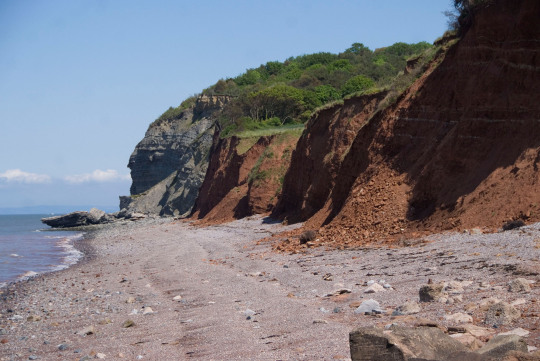
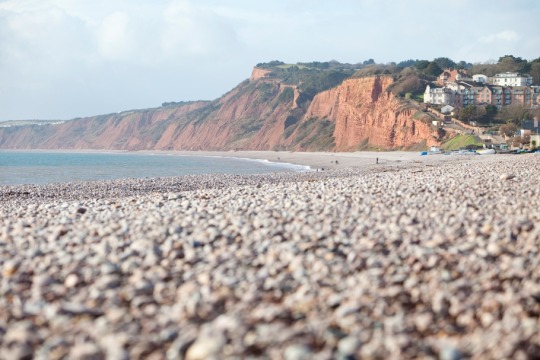
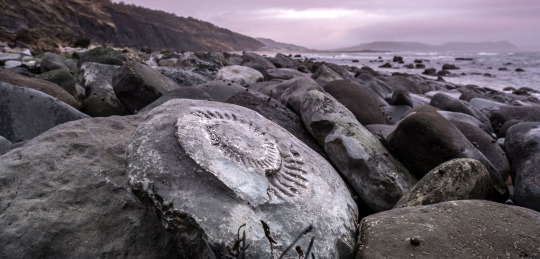
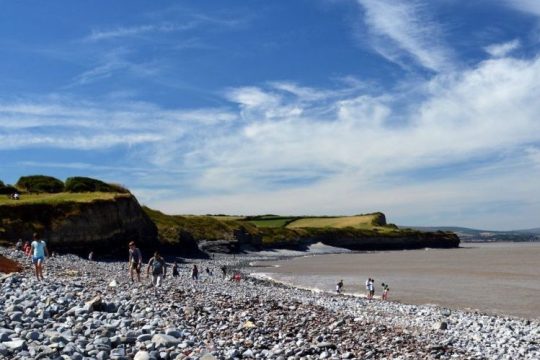

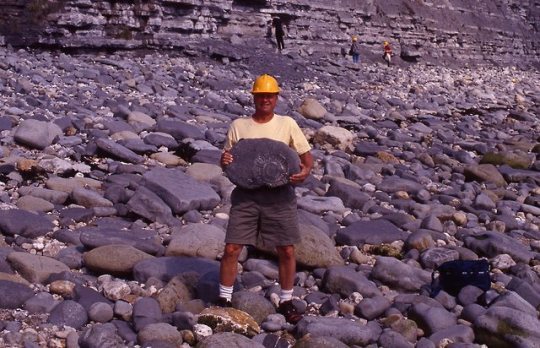
I am back! (Sorry.)
After an unexpectedly busy( but welcome) fortnight for my London based company... This week I have had a rather different and enjoyable business trip accompanying trainees from a Norwegian research and engineering company on a visit to Dorset, Devon and Somerset.
I did two similar trips for the same company last year. But, this one was slightly different. All of the trainees were geologists... more interested in collecting fossils than learning about military hardware and training practices. We were only allowed to visit Lulworth Camp for two hours, as intensive "live fire" exercises were taking place... And we had a brief stop this morning at Norton Manor to chat with Commandos about their recently issued new equipment.
Apart from that, the group spent most of their time on beaches looking at the different types of rock, the cliffs and other things that do not really interest me. I was able to add some historical information about the sites we visited.
Personally... I looked at it as an agricultural/farming tour. It was interesting to see how other farms are coping after the wet August and September heatwave. I am not sure if I am glad, or sad to see so many facing the same problems as my own farm.
Today (12th August 2023), I saw signs for the National Ploughing Championships at Bishop's Lydeard, near Taunton which take place this weekend. My farm will not be represented... we are too busy ploughing our own fields!
2 notes
·
View notes